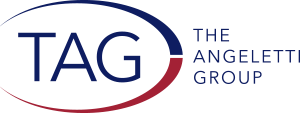Conversations about the unique fundraising challenges each nonprofit faces are not always unique. Abbie Fine, Associate Vice President of Client Partnerships has worked with many nonprofits–on staff, as a board member, as a panel grant reviewer, and at a grant writing firm engaging with 100+ clients–and she came to expect certain conversations. What’s hard for one
organization is often hard for others. We can take comfort that we’re not alone and learn from others (or the experts at TAG who hear it all!)
One theme often heard from organizations big and small is the growing challenge of cutting through the noise to reach donors and potential donors.
“What I hear from nonprofits again and again,” says Abbie, “is that individual donations are declining, event attendance is decreasing, and online engagement is down. Nonprofits understand how hard it is to stand out when there are so many causes and activities, and so much content competing for the community’s attention.”
How to Reach Donors
While there is no one magic bullet to solve this challenge, here are three tips to help you reach your donors in a positive, productive way.
1. Be authentic to your organization’s mission and values. It doesn’t matter how consistently you message or how you get attention if it’s not a true reflection of the organization. Attention that is misaligned with your mission will not help you develop and sustain a strong donor base.
- The best way to stand out is to be yourself, and it applies to organizations, too. Leaning into what’s unique about your mission and values will help attract the attention of truly aligned supporters.
- If you don’t feel like your mission and values are unique, it might be time for a team exercise to reflect on the mission and refine it. No two organizations are the same!
- Don’t jump on a trend that doesn’t align with the organization’s values.
- Don’t copy what other organizations are doing to get attention, whether that’s a
campaign message, special event, or communication strategy.
2. Ask the donors what they want–and listen to what they say. The best way to know how someone wants to be communicated with is to invite their input.
- Whenever possible, ask directly:
▪ Do you prefer emails, phone calls, or mail? Is it easiest if I send a text?
▪ Would you like to be on our monthly or quarterly e-newsletter? People can tell you the best way to cut through the noise around them. - Ask in one-on-one conversations, send surveys, invite email replies, or pose questions on social media.
- Of course, make sure you have the systems to track what you learn, and the processes to follow through!
- Take small steps that your team can implement, focusing on just a few aspects of communication at a time.
3. Don’t be afraid to live in the moment. Part of the challenge in cutting through the noise is the speed and volume of information. If there’s an opportunity to get attention in an authentic way related to the news cycle or a trend, give it a try. You can’t manufacture a viral moment, but you can sometimes grab a piece of attention from a current one.
- Note: you probably can’t authentically participate in every news moment or viral
trend. Choose moments that have a genuine connection to your organization’s
work, mission, and values.
When making a decision about a particular outreach try asking yourself these 3
questions:
1. Is it authentic to our mission and values?
2. Can I make it more responsive to what I’ve heard from this community?
3. Can I make a genuine connection to our current moment?
Contact Abbie Fine to discuss ways to improve your organization’s strategy for reaching donors.


